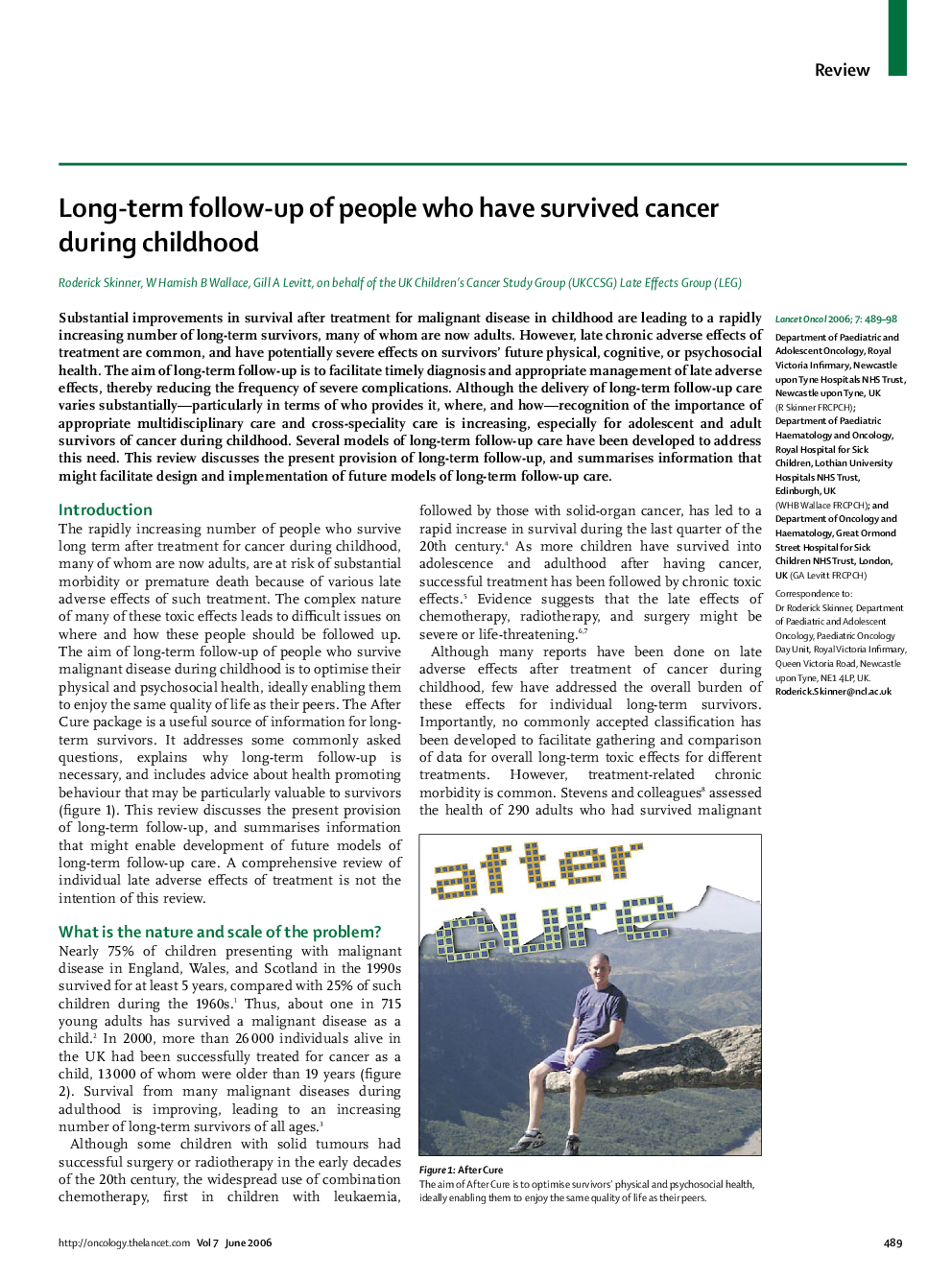| Article ID | Journal | Published Year | Pages | File Type |
|---|---|---|---|---|
| 3995107 | The Lancet Oncology | 2006 | 10 Pages |
SummarySubstantial improvements in survival after treatment for malignant disease in childhood are leading to a rapidly increasing number of long-term survivors, many of whom are now adults. However, late chronic adverse effects of treatment are common, and have potentially severe effects on survivors' future physical, cognitive, or psychosocial health. The aim of long-term follow-up is to facilitate timely diagnosis and appropriate management of late adverse effects, thereby reducing the frequency of severe complications. Although the delivery of long-term follow-up care varies substantially—particularly in terms of who provides it, where, and how—recognition of the importance of appropriate multidisciplinary care and cross-speciality care is increasing, especially for adolescent and adult survivors of cancer during childhood. Several models of long-term follow-up care have been developed to address this need. This review discusses the present provision of long-term follow-up, and summarises information that might facilitate design and implementation of future models of long-term follow-up care.
